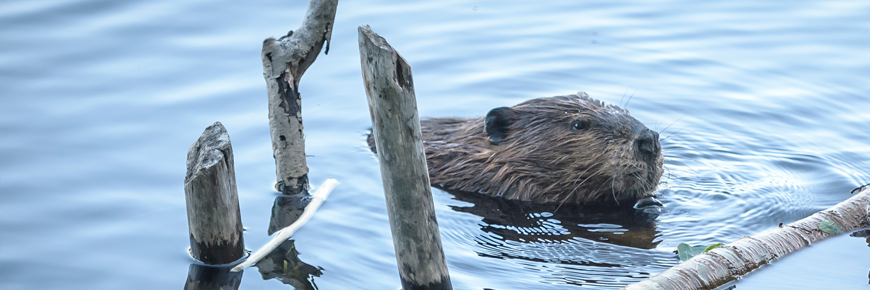
Beaver (Castor canadensis)
Sault Ste. Marie Canal National Historic Site
Canada’s national animal, look for evidence of beaver activity along the Attikamek Trail. Gnawed tree stumps are a sure sign that beavers are at work. Beavers can cut down up to 200 trees per year to construct their dams and lodges. In areas with shallow water, a dam is used to create a deeper pond that will not freeze to the bottom in winter. The pond provides protection from predators and year-round underwater access to their lodge. The lodge is where beavers reside, with each lodge housing a single family group consisting of parents, kits and young beavers up to two or three years old.
Beaverville
Beaver can alter the environment to suit their needs. Here in the channel, beavers built a dam to raise the water level to a depth sufficient for the construction of their lodge, and for the caching of a winter food supply below the frozen surface of the water. The beaver have now moved farther upstream. An active lodge, food cache and evidence of their handiwork in the felled trees in the surrounding woods can be seen.
A blue kingfisher waits patiently on an overhanging branch, searching for a glint of fin or scale below the water's surface to launch it on a lightning-quick plunge for a tasty meal of fish. Mink patrol the shoreline and shallows hunting for frogs, snakes, mice and muskrat.
Expert swimmers, mink often take up residence in abandoned beaver dens or muskrat burrows. In and near the rapids, the unpredictable dives and magical re-appearances of common mergansers, as they hunt for fish below the surface, keep watchers from the shore guessing where they'll pop up next!
- Date modified :